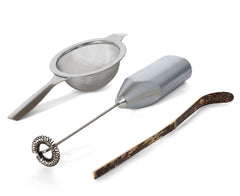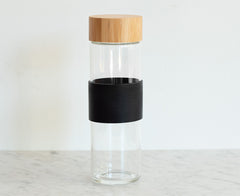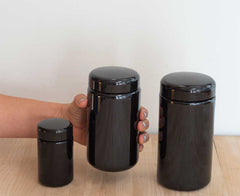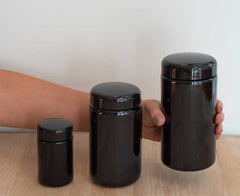Matcha comes from the same plant that all true teas come from: camellia sinensis, the leaves of which can be made into green tea (unfermented tea; it’s simply steamed and dried), into oolong tea (the leaves partially ferment), and into black tea (fully fermented). Matcha is a true green tea, but its growth style, harvest, and production style are markedly different from those of other green teas, let alone from those of oolong and black teas.
That said, camellia sinensis does have varietals, and some of them, it turns out, produce better matcha than others. The highest-grade matcha come almost invariably from one of three Japanese varietals (they’re called samidori, okumidori, and yabukita in Japanese)
These three varietals of the noble tea plant have been explored, selected for, and grown in Japan for more than 900 years. They are keenly understood by many Japanese growers/farmers, and in many cases have been cultivated by family lineages for many hundreds of years. Suffice it to say that these families really know how to cultivate these three varietals to obtain superior matcha.
Truly superior matcha must have five key characteristics:
• brilliant color intensity
• superior umami
• excellent terroir (which by definition means a rare tea)
• dreamy frothability, and
• a long, smooth finish that contains crema to the very last drop.
The combination of those five traits is a very rare occurrence; most matcha has a dull color, bitterness instead of umami, is mass-produced, forms weak crema, if it forms it at all, and has little to no finish.
The main area of matcha cultivation in Japan is a place called Uji, which sits on the southeast border of the city of Kyoto, the homeland of almost all traditional Japanese arts and aesthetic pursuits. Many matcha connoisseurs (yes, they really do exist in Japan) consider Uji to have the ultimate terroir for matcha cultivation, and many of Japan’s most distinguished (and most expensive) matcha come from Uji. Our Breakaway Blends 94 and 97 both come from Uji (specifically, the 97 comes from Ogura, Uji, and the 94 is from Tawara, Uji).
The other distinguished matcha appellation is in Aichi Prefecture, in a town called Nishio, a historic tea-cultivating region dating back to the late Heian Period (12th century). Nishio has what many consider to be ideal terroir for matcha: the climate is mild, it’s remote, its soils are fertile, and it’s elevated (roughly 600 meters), all of which add up to wildly bright color, an abundance of umami, and maximum nutrients.
Many teas get harvested several times throughout the year; a second harvest is sometimes referred to in the literature as a “second flush.” Many matcha producers create second and even third flushes.
The very best matcha, in contrast, gets harvested—always by hand—just once per year, typically in May. Roughly six weeks before harvest, that is to say sometime in late March or early April, the tea fields, which are surrounded by scaffolding of sorts, are covered from the top. Traditionally, straw was employed for this, but nowadays it’s typically black vinyl sheets. The idea is to slowly and gradually decrease the amount of sunlight, and hence photosynthesis, by covering up more and more of the light allowed to shine on the plants. The highest grade matcha is grown in near-darkness by the time harvest rolls around.
As a result of this decreased light, the tea leaves begin to crank out increasing amounts of both chlorophyll and amino acids; the newest growth is very, very delicate, with ever-softer and ever-thinner buds. This increased amino acid content serves to concentrate specific molecules, most of which are glutamates, which give the match its intense umami flavor profile. Great matcha is sweet and mouth-watery, with no traces of bitterness, because of this high amino acid content.
Only the smallest, youngest/greenest parts of the plant—the two leaves at the tip of each new shoot—are picked. They are then steamed to preserve the color and nutrients, and to stop the enzymatic action within the leaves, then thoroughly dried in large cages equipped with heated blowers.
Once dry, they are sorted for grade (with the youngest, greenest, most tender leaves earning the highest marks). Then the laborious and immensely time-consuming task of destemming and deveining happens. The leaves that make it through this rigorous process are called tencha, and, of course, the quality of tencha varies widely. Tencha is then kept refrigerated until it’s ready to be ground, using large granite wheels that rotate very slowly and gently to avoid scorching, into a very fine powder known as matcha. It takes more than an hour to grind 30 grams, which is one of the reasons hand-milled matcha costs so much (labor costs are quite high in Japan). It is this grinding process from which matcha—抹 茶, literally, “ground tea”—derives its name.
The ground tea is then vacuum packed and refrigerated at low temperatures until it ships.




